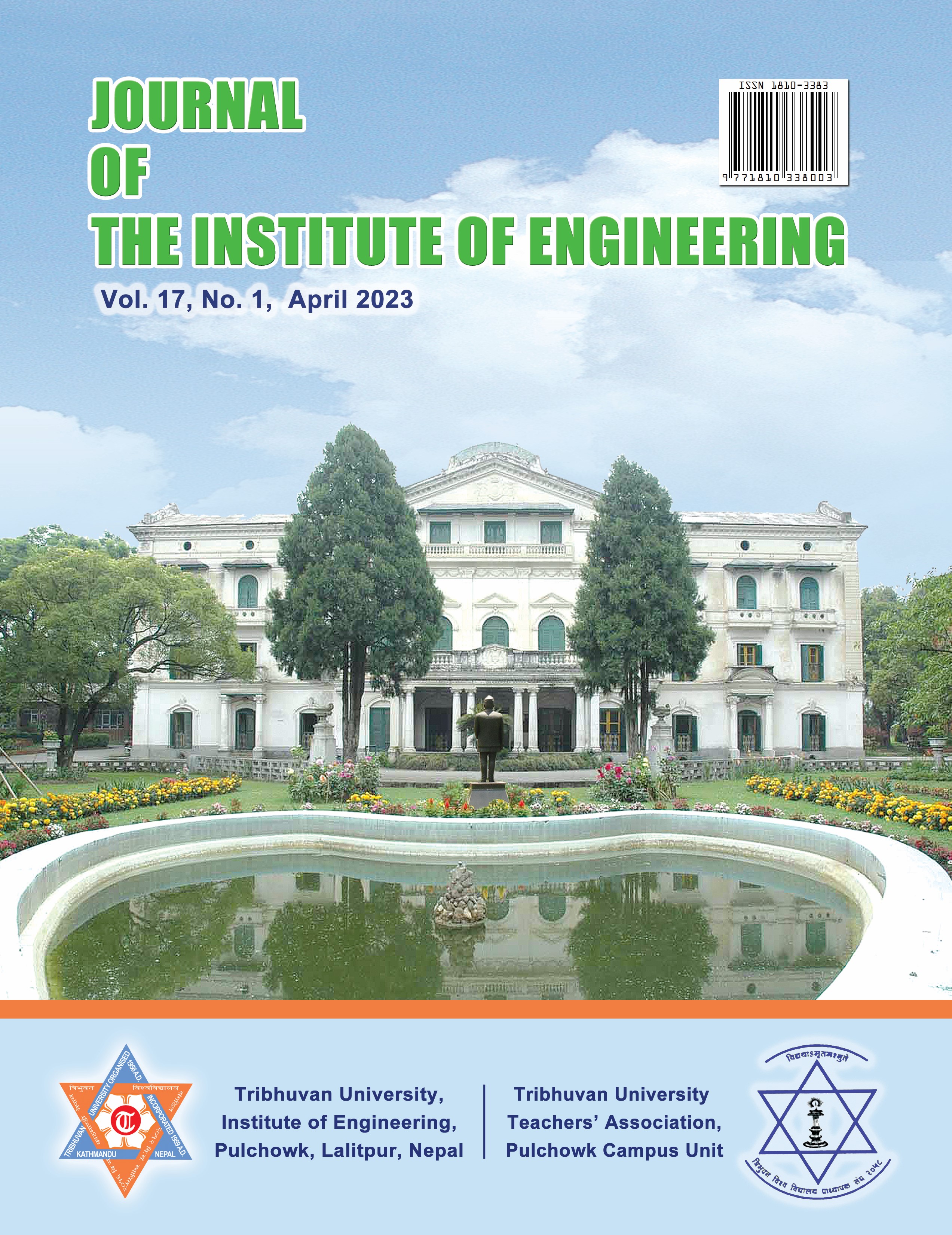Response Spectra for Nepal through Probabilistic Approach
Keywords:
Earthquake catalogue, Probabilistic seismic hazard analysis, Seismic hazard map, Design spectraAbstract
In this study, a rectangular area surrounding Nepal, bounded by the coordinates (N 25° 30' 00", E 78° 30' 00"), (N 31° 30' 00", E 89° 30' 00") has been considered. Study area has been divided into five hundred areas by defining the grids at the interval of 0.5 degree along longitude and 0.25 degree along latitude. By preparing detailed earthquake catalogue and defining areal seismic sources, probabilistic seismic hazard analysis has been done in terms of peak ground acceleration. The completeness of the data has been done by using Stepp's procedure. Seismicity in four regions of study area has been evaluated by defining 'a' and 'b' parameters of Gutenberg Richter recurrence relationship. Average hazard spectrum for 10% probability of exceedence in fifty years in five percent damped condition is obtained and then normalized to obtain design spectra and seismic zoning factor ‘Z’ is obtained in terms of contour for all areas of Nepal.

